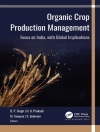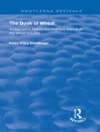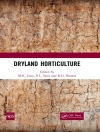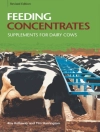A complete guide to the evolving methods by which we may recover by-products and significantly reduce food waste
Across the globe, one third of cereals and almost half of all fruits and vegetables go to waste. The cost of such waste – both to economies and to the environment – is a serious and increasing concern within the food industry. If we are to overcome this crisis and move towards a sustainable future, we must do everything possible to utilize innovative new methods of extracting and processing valuable by-products of all kinds.
Food Wastes and By-products represents a complete primer to this important and complex process. Edited and written by leading researchers, the text provides essential information on the supply of waste and its composition, identifies foods rich in valuable bioactive compounds, and explores revolutionary methods for creating by-products from fruit, vegetable, and seed waste. Other chapters discuss the nutraceutical properties of value-added by-products and their uses in the manufacturing of dietary fibers, food flavors, supplements, pectin, and more. This book:
* Explains how reconstituted by-products can best be used to radically reduce food waste
* Discusses the potential nutraceutical assets of recovered food waste
* Covers a broad range of by-product sources, such as mangos, cacao, flaxseed, and spent coffee grounds
* Describes novel extraction processes and the emerging use of nanotechnology
A significant contribution to the field, Food Wastes and By-products is a timely and essential resource for food industry professionals, government agencies and NGOs involved in nutrition, agriculture, and food production, and university instructors and students in related areas.
Daftar Isi
List of Contributors xv
1 Cereal/Grain By-products 1
Norma Julieta Salazar-López, Maribel Ovando-Martínez, and J. Abraham Domínguez-Avila
2 Enrichment and Utilization of Thin Stillage By-products 35
Timothy J. Tse and Martin J. T. Reaney
3 Pulse By-products 59
Iván Luzardo-Ocampo, M. Liceth Cuellar-Nuñez, B. Dave Oomah, and Guadalupe Loarca-Piña
4 Aquafaba, from Food Waste to a Value-Added Product 93
Rana Mustafa and Martin J. T. Reaney
5 Brazilian (North and Northeast) Fruit By-Products 127
Larissa Morais Ribeiro DA Silva, Paulo Henrique Machado De Sousa, Luiz
6 Health Benefits of Mango By-products 159
Abraham Wall-Medrano, Francisco J. Olivas-Aguirre, Jesus F. Ayala-Zavala, J. Abraham Dominguez-Avila, Gustavo A. Gonzalez-Aguilar, Luz A. Herrera-Cazares, and Marcela Gaytan-Martinez
7 Citrus Waste Recovery for Sustainable Nutrition and Health 193
Adriana Maite Fernández-Fernández, Eduardo Dellacassa, Alejandra Medrano-Fernandez, and María Dolores Del Castillo
8 Vegetable By-products 223
L. Gabriela Espinosa-Alonso, Maribel Valdez-Morales, Xochitl Aparicio-Fernandez, Sergio Medina-Godoy, and Fidel Guevara-Lara
9 Flaxseed By-products 267
B. Dave Oomah
10 Seed Hull Utilization 291
E.E. Martinez-Soberanes, R. Mustafa, M.J.T. Reaney, and W.J. Zhang
11 Health Benefits of Spent Coffee Grounds 327
Norma Julieta Salazar-López, Carlos Vladimir López-Rodríguez, Diego Antonio Hernández-Montoya, and Rocio Campos-Vega
12 Health Benefits of Silverskin 353
Amaia Iriondo-De Hond, Teresa Herrera, and María Dolores Del Castillo
13 Cocoa By-products 373
Karen Haydeé Nieto Figueroa, Nancy Viridiana Mendoza García, and Rocio Campos-Vega
14 Emerging and Potential Bio-Applications of Agro-Industrial By-products Through Implementation of Nanobiotechnology 413
Hayde Azeneth Vergara-Castañeda, Gabriel Luna-Bárcenas, and Héctor Pool
References 436
Index 445
Tentang Penulis
DR. ROCIO CAMPOS-VEGA is Researcher-Professor, Universidad Autónoma de Querétaro, Santiago de Querétaro, Mexico, and is part of Mexico’s National Research System.
DR. B. DAVE OOMAH is a retired research scientist formerly responsible for crop utilization in the National Bioproducts and Bioprocessing Program at Agriculture and Agri-Food Canada.
DR. HAYDÉ AZENETH VERGARA-CASTAÑEDA is Researcher-Professor, Universidad Autónoma de Querétaro, Santiago de Querétaro, Mexico, and is part of Mexico’s National Research System.












